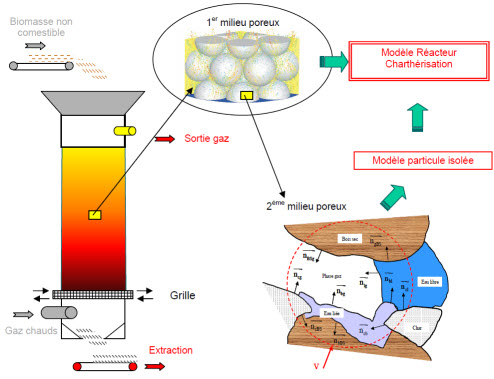Pyrolysis of CCA impregnated wood waste
This activity started in 2005 and was built around several partnership
with industrial company Thermya (bought by AREVA group in 2012).
The main object of the partnership was the thermal disposal of CCA
treated wood waste in the Chartherm process. In this one, the load was
pyrolysed in a cuntercurrent fixed bed reactor. The goal was to release the
organic content of the wood waste as volatiles and to concentrate the heavy
metals in the solid residue of the operation. Apart from the CFD modelling
of a gaseous incinerator (for the volatiles released during the pyrolysis)
the research activity have been focussing on the development of mathematical
models for the pyrolysis reactor.
Sketch of the pyrolysis reactor.
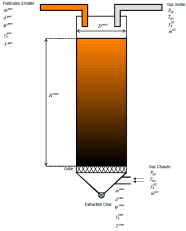
The first model was composed of two cunterccurent phases. The first one was coposed of solid particles of non spherical particles which was in descendant plug flow while the second one was a multicomponent gaseous phase in ascending plug flow. In this first approach, the particles were supposed to be isothermal and homogeneous, its properties depending solely upon its position from the top of the reactor to its bottom. Dealing with the gaseous phase, it properties (composition, temperature) depends also solely upon height from the bottom of the reactor. Interactions between both phases taken into account through the description of heat and mass transfer (drying, condensation and release of volatiles). This approach allows describing the evolution of the different data of the reactor as a function of the height above the bottom of the reactor.
Results from the 1D Model
Axial profile of: temperature (left),
mass fraction of the componenents
taken into account (center)
and gaseous composition (right).
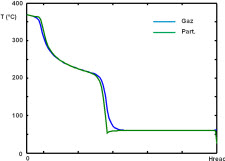
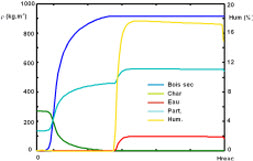
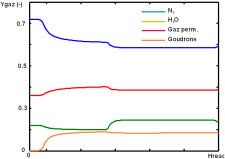
For the second model, the main idea has been kept. It was consisting in two cunterccurent phases (one for the non-spherical isothermal and homogeneous particles and the other one for multicomponent gas). Nevertheless, Each of these phases is described as a 2D model (depending upon the height above the bottom of the reactor and upon its radial position).
Results of the 2D model.
Temperature profile.
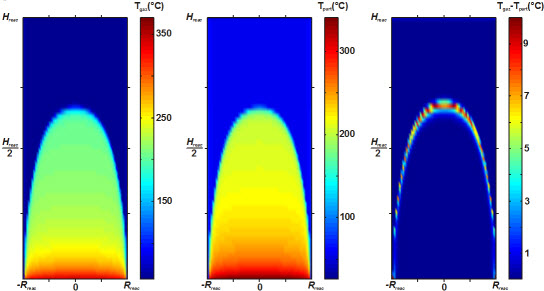
Results of the 2D model (continued).
Solid mass fractions profiles.
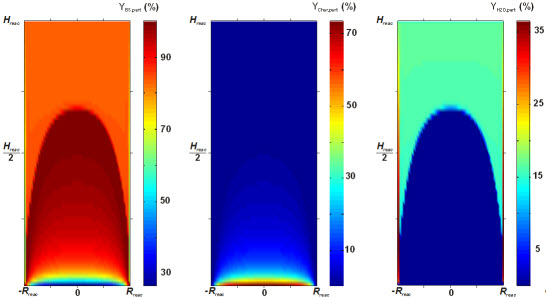
Results of the 2D model (continued).
Gaseous mass fractions profiles.
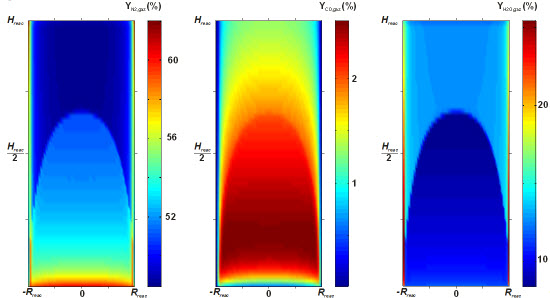
The third model was developped in the frame of the PhD Thesis of Julien Ratte (T4 Modélisation d’un réacteur de traitement de bois imprégné.) The concept of the model was almost similar to the concept of the 1D Model presented above, but it had two main differences. The first one is relative to the fact that the model is a transient one, it allows describing the dynamics of the system. The second one is relative to the description of the particles. Wheras they were considered as non spherical, isothermal and homogeneous in the first model, they were considered as spherical but with internal properties depending upon the radius in the present one. This 1D internal description of the particles was performed using the volume averaging concept which allow computing internal profiles of temperature and composition. This intra particle model has been validated thanks to comparison with experimental results from literature.
Results from the intra particular model.
Experimental profiles of temperature versus numerical ones.
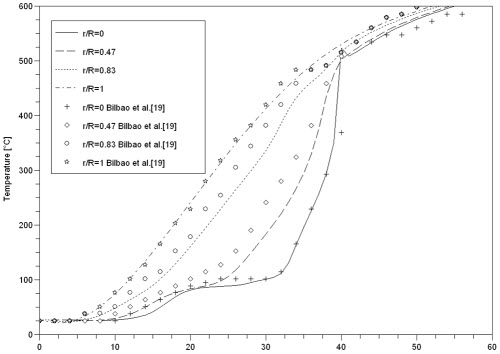
One validated, this model has been used to have a better understanding of the physico-chical process involved in the slow pyrolysis of spherical wood particles.
Results from the intra particular model (continued).
Numerical profiles of composition inside the particle
H2O (left) and CO2 (right) in kg/m3 particle.
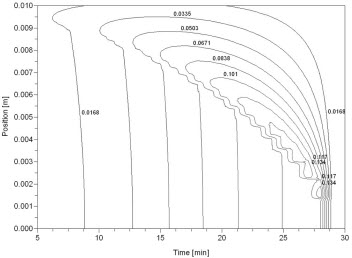
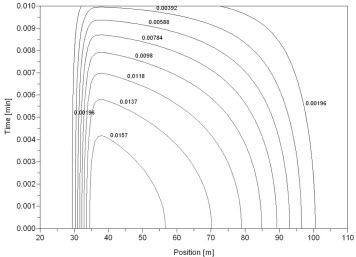
This model was then integrated in the more general 1D reactor model what allow creating a new transient reactor model. This is all the more important that, indeed, the reactor operates as a transient one, because the extraction of the solid products of pyrolysis is not continuous.
Sketch of the model developped during the PhD Thesis of J.Ratte.
(Figure by Julien Ratte.)
